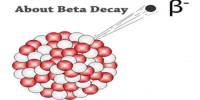Super-solidity refers to the ability of quantum matter to be both solid and fluid at the same time. Quantum gases are ideal for delving into the microscopic repercussions of matter interactions. In the laboratory, scientists can now precisely manipulate individual particles in highly cooled gas clouds, revealing phenomena that are not seen in the real world.
Individual atoms in a Bose-Einstein condensate, for example, are entirely delocalized. This means that at any one time, an identical atom exists at every position inside the condensate.
Two years ago, a team led by Francesca Ferlaino from the University of Innsbruck’s Department of Experimental Physics and the Austrian Academy of Sciences’ Institute of Quantum Optics and Quantum Information in Innsbruck succeeded in generating super-solid states in ultra-cold quantum gases of magnetic atoms for the first time. The atoms self-organize into droplets and arrange themselves in a regular way due to the magnetic interaction.
“Normally, you would think that each atom would be found in a specific droplet, with no way to get between them,” says Matthew Norcia of Francesca Ferlaino’s team.
“However, in the super-solid state, each particle is delocalized across all the droplets, existing simultaneously in each droplet. So basically, you have a system with a series of high-density regions (the droplets) that all share the same delocalized atoms.” Despite the presence of spatial order, this odd construction allows for phenomena such as frictionless flow (superfluidity).
A super-solid state combines the crystallization of a many-body system with the dissipation-free movement of the atoms that make it up. However, unlike the super-solid state, as initially postulated, lattice super-solids do not have a continuous ground-state degeneracy.
New dimensions, new effects to explore
Until far, quantum gases’ super-solid states had only been detected as a string of droplets (along one dimension). “We have now expanded these phenomena to two dimensions in partnership with theorists Luis Santos at Leibniz Universität Hannover and Russell Bisset in Innsbruck, giving rise to systems with two or more rows of droplets,” Matthew Norcia adds.
This is not only a qualitative enhancement, but it also significantly broadens the scope of inquiry. “For example, in a two-dimensional super-solid system, one can study how vortices form in the hole between several adjacent droplets,” he says.
“These vortices described in theory have not yet been demonstrated, but they represent an important consequence of superfluidity,” Francesca Ferlaino is already looking into the future. The experiment, which was just published in the journal Nature, opens up new avenues for future research into the underlying physics of this interesting form of matter.
New research field: Supersolids
Super-solidity, which was predicted 50 years ago and possesses unexpected features, has been studied extensively in superfluid helium. However, despite decades of theoretical and practical inquiry, there was still no unambiguous confirmation of super-solidity in this system.
Two years ago, researchers in Pisa, Stuttgart, and Innsbruck independently created so-called super-solids from magnetic atoms in ultra-cold quantum gases for the first time. The strong polarity of magnetic atoms, whose interaction features enable the development of this paradoxical quantum mechanical state of matter in the laboratory, is the foundation for the new, rapidly emerging study field of super-solids.
The Austrian Science Fund FWF, the Federal Ministry of Education, Science and Research, and the European Union, among others, funded the research.
















